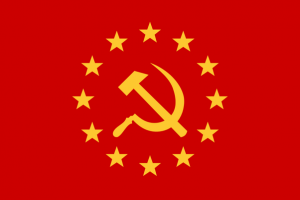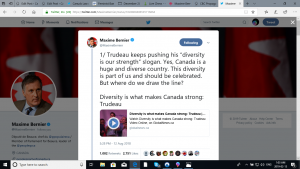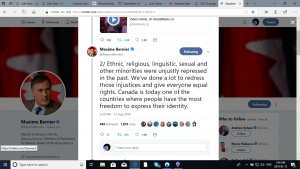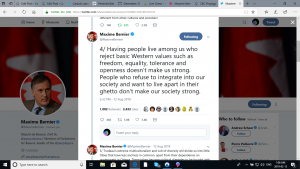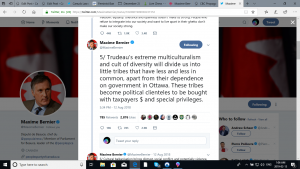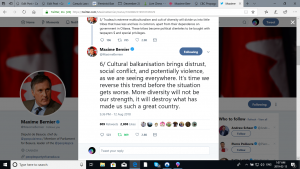(Interrogation of McClintic)

(Interrogation of Rafferty)
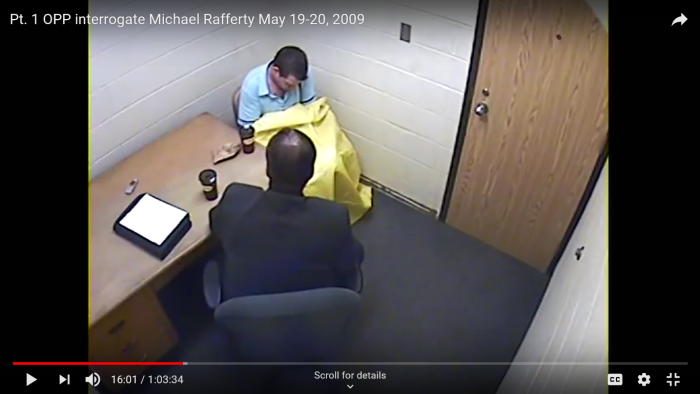
(News on McClintic’s Transfer To Healing Lodge)

As cited in a previous article, see here, all defendants/prisoners are not equal in the eyes of the law. This is a racially discriminating practice that Canada has been involved in doing since the late 1990s.
Here is section 718.2(e) of the Canadian Criminal Code:
all available sanctions other than imprisonment that are reasonable in the circumstances should be considered for all offenders, with particular attention to the circumstances of aboriginal offenders.
Yes, one racial group is allowed to get what amounts to a race based discount. The 1999 Gladue ruling essentially paved the way for this to be normalized across Canada, while the Ipeelee decision expanded the scope to include long term offenders.
Here are the links to the Court decisions of Gladue (1997, 1999) and Ipeelee (2012).
R. v. Gladue, 1997 CanLII 3015 (BC CA)
R. v. Gladue, [1999] 1 SCR 688, 1999 CanLII 679 (SCC)
R. v. Ipeelee, [2012] 1 SCR 433, 2012 SCC 13 (CanLII)
While Indigenous people getting a race-based discount is nothing new in Canada, the transfer of child killer Terry McClintic to a “healing lodge” has the Canadian public flared up.
In 2009, 8 year old Tori Stafford was murdered by Terri McClintic, who was an accomplice to Michael Rafferty. In 2010, both McClintic and Rafferty received life sentences, with a 25 year custodial minimum. In 2014, McClintic was transferred to a medium security prison. Now, in 2018, McClintic is being sent to this “healing lodge”.
Not only is McClintic a child killer, but she viciously assaulted another inmate in 2012, and bragged that she only regretted not causing worse injury. Definitely a candidate for transfer from maximum to medium security prison.
Unfortunately, the federal parties are playing politics with it, while avoiding the real issue. The Liberals, now in government, blame the Conservatives for the 2014 transfer to medium security prison (when Stephen Harper was PM). The Conservatives blame the Liberals for not stopping this transfer. Both blame the other, while saying that they were not able to do anything — that Corrections Canada makes the decisions.
But the real issue that both Liberals and Conservatives dodge is that the entire law giving special treatment to Aboriginal/Indigenous/First Nations peoples. No group should receive “any” special treatment. Raced-based discounts are immoral.
What “should” be done is have the Gladue/Ipeelee rulings overturned. Yes, the Supreme Court of Canada endorsed this nonsense, but it can be stopped permanently using Section 33, the Notwithstanding Clause of the Canadian Charter of Rights and Freedoms.
Application of Charter
32. (1) This Charter applies
(a) to the Parliament and government of Canada in respect of all matters within the authority of Parliament including all matters relating to the Yukon Territory and Northwest Territories; and
(b) to the legislature and government of each province in respect of all matters within the authority of the legislature of each province.
Marginal note:
Exception
(2) Notwithstanding subsection (1), section 15 shall not have effect until three years after this section comes into force.
Marginal note:
Exception where express declaration
33. (1) Parliament or the legislature of a province may expressly declare in an Act of Parliament or of the legislature, as the case may be, that the Act or a provision thereof shall operate notwithstanding a provision included in section 2 or sections 7 to 15 of this Charter.
Rafferty/McClintic have frequently been compared to Paul Bernardo/Karla Homolka, another male/female child killing couple. Karla Homolka’s mere 12 year sentence outraged Canadians, as does the McClintic transfer now.
Rather than bickering about whose government dropped the ball, this soft bigotry of low expectations needs to end. Legislate this nonsense out of Canadian law.
Update on the Story: On October 3, the Liberals, NDP and Green Party voted against a Conservative motion that would have kept Terri-Lynn McClintic in prison. See this link.
Further Update on the Story
On November 8, the Liberals have announced they will make new rules to send McClintic back. However, it doesn’t address underlying racist nature of the law — different sentencing rules based on skin colour, or even on ”how someone identifies”.

